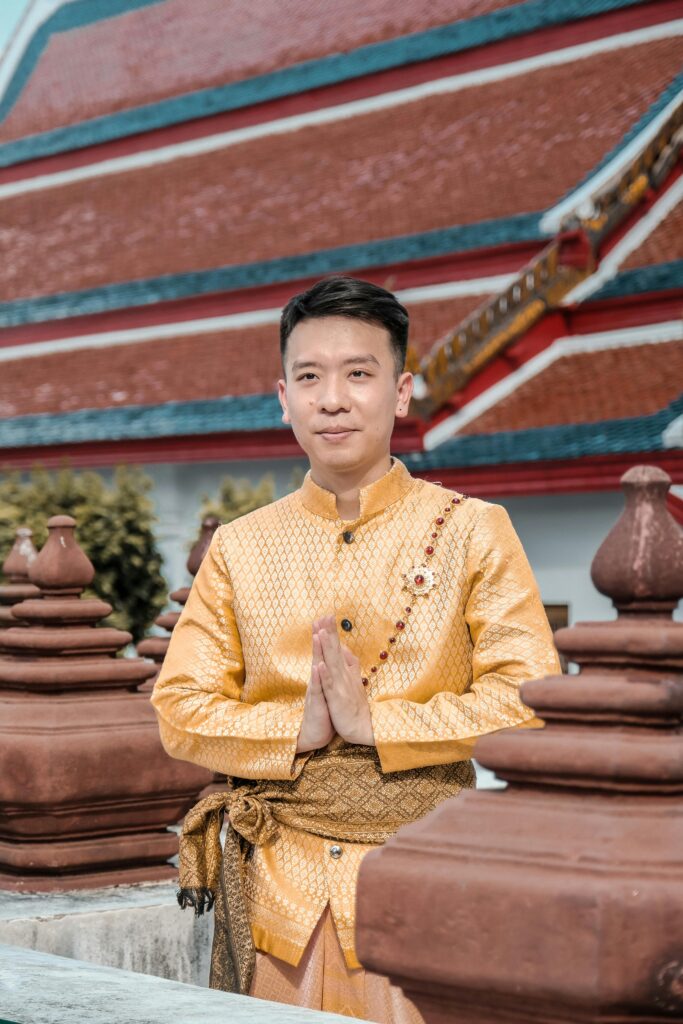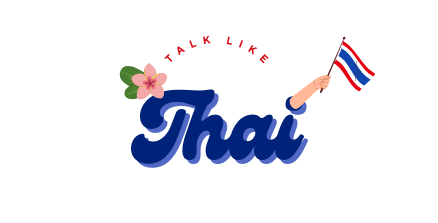Lesson 1: Basic Thai Greetings
The wai is a traditional Thai greeting and sign of respect. It’s done by pressing your palms together near your chest and bowing your head slightly.

Words to Know
| Thai Word | Pronunciation | Meaning |
| สวัสดี | Sawasdee | Hello/Goodbye |
| ครับ (for men) | Krab | Polite ending word |
| ค่ะ (for women) | Ka | Polite ending word |
| ไหว้ | Wai | Shows respect |
Example Sentences
| Situation | Thai Greeting | Pronunciation |
| Greeting a friend | สวัสดีครับ / สวัสดีค่ะ | Sawasdee krab / Sawasdee ka |
| Saying goodbye to someone | สวัสดีครับ / สวัสดีค่ะ | Sawasdee krab / Sawasdee ka |
| Greeting an elder or teacher | สวัสดีครับ พร้อมไหว้ / สวัสดีค่ะ พร้อมไหว้ | Sawasdee krab + wai / Sawasdee ka + wai |
The Wai Gesture
| Person | Hand Position | Use |
| Same age or younger | Hands near the chest | Respectful but casual |
| Elders or people of higher status | Hands near the nose | Shows deference and respect |
| Monks or highly respected people | Hands near the forehead | Deep respect and reverence |
Practice: Try It Yourself!
- Greeting a peer:
- Say: “Sawasdee krab” (if you’re male) or “Sawasdee ka” (if you’re female).
- Perform the wai with hands near your chest.
- Greeting an elder:
- Say: “Sawasdee krab/ka.”
- Raise your hands near your nose and slightly bow.
- Saying goodbye at a market:
- Use the same phrase: “Sawasdee krab/ka.”
Quick Cultural Tips
- Always use polite endings (“krab” or “ka”) to show respect.
- The wai is optional with friends but always used with elders or respected figures.
- Smile while greeting—it’s part of the “Land of Smiles” charm!
